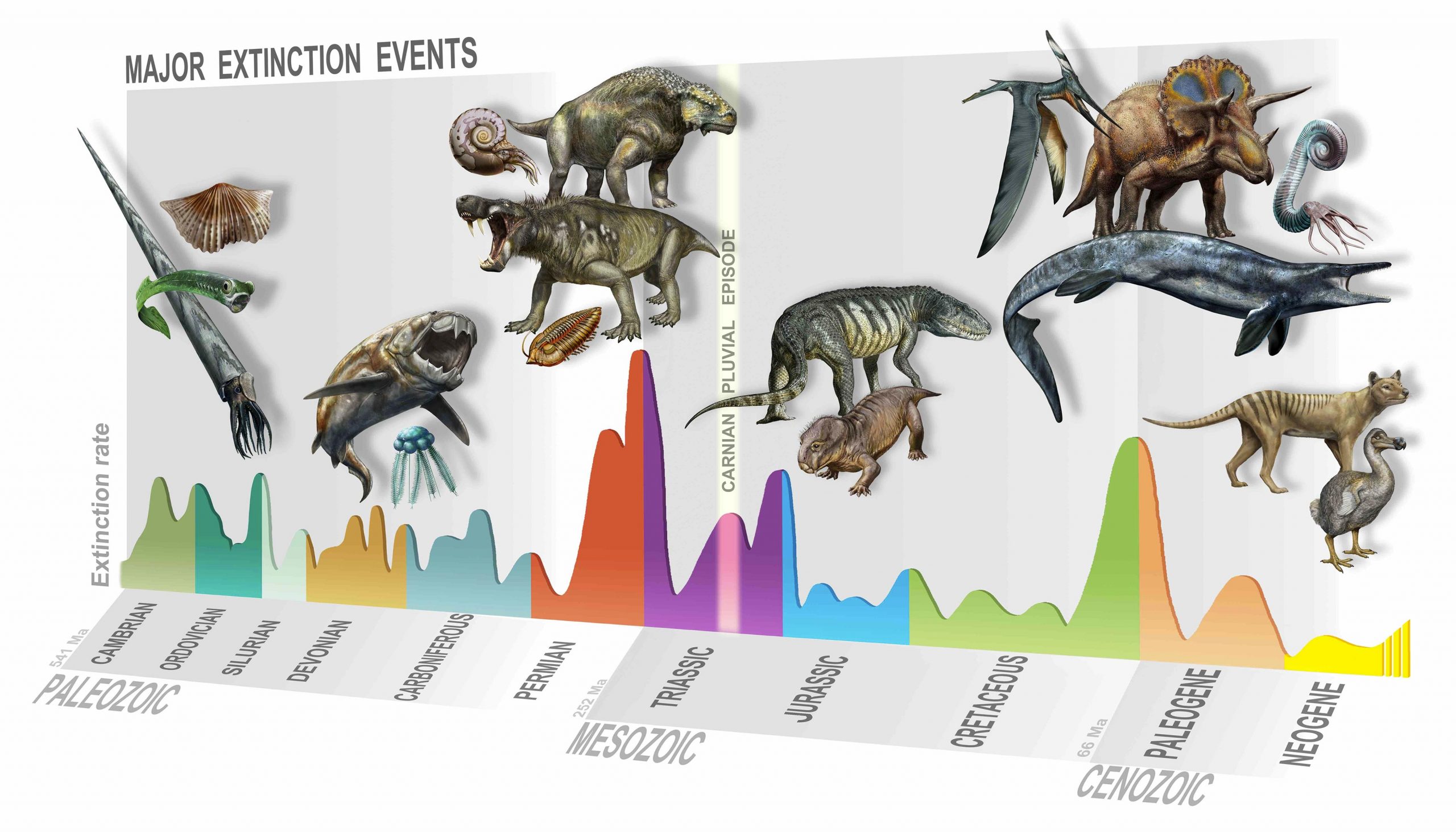
The Carnian Pluvial Event[2] (CPE) was a major global environmental event that occurred 233 million years ago[1] during the late Carnian stage of the Late Triassic period[3]. It was triggered by massive volcanic eruptions in[1] western Canada, leading to spikes in global warming and increased rainfall. This event introduced markedly more humid conditions across the globe[3], interrupting the otherwise arid climate[3] of the Late Triassic period and causing disruptions to geochemical cycles[3], particularly the carbon cycle. The CPE had a significant impact on the evolution of life, leading to extinctions among various plant and animal groups and setting the stage for the rise of dinosaurs and the appearance of modern groups of plants and animals[1]. It was associated with significant climate and ecological changes, including global warming, widespread ocean anoxia[2], and dry-humid-dry climate changes on land[2]. The event lasted for perhaps 1-2 million years and saw the evolution and diversification of many[3] important taxa, including some of the earliest dinosaurs, lepidosaurs, and mammaliaforms, as well as the first appearance of coccoliths and dinoflagellates among microplankton in the marine realm. Overall, the CPE was a period of significant geological and biological change.
Get more accurate answers with Super Pandi, upload files, personalized discovery feed, save searches and contribute to the PandiPedia.
Let's look at alternatives:
- Modify the query.
- Start a new thread.
- Remove sources (if manually added).